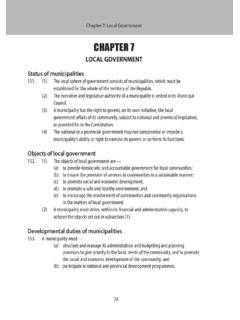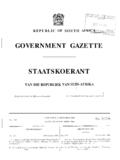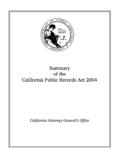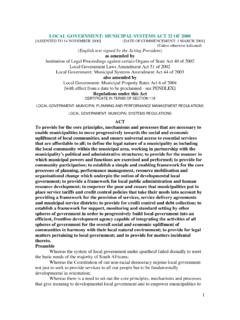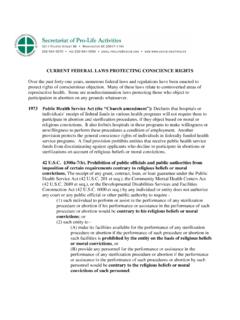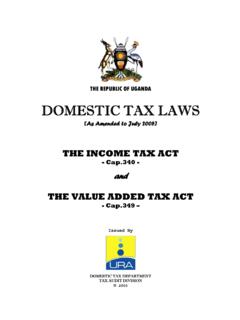Transcription of Retrenchment, Labor Laws and Government Policy: An ...
1 retrenchment , Labor laws and Government Policy: An analysis with special reference to India by Kaushik Basu, Gary S. Fields, and Shub Debgupta 1. _____. Basu: Dept. of Economics, Cornell University, Ithaca, NY 14853. Fax: (607) 255 2818. email: 1. Fields: Dept. of Economics, Cornell University, Ithaca, NY 14853. Fax: (607) 255 2818. email: Debgupta: Dept. of Labor Economics, Cornell University, Ithaca, NY 14853. email: The paper is written for the World Bank, Washington, The authors are grateful to Jeff Hammer and Martin Rama for helpful comments and suggestions.
2 The findings, interpretations, and conclusions expressed in this paper are entirely those of the authors. They do not necessarily represent the view of the World Bank, its Executive Directors, or the countries they represent. ii Contents Page 1. Introduction 1. 2. Factual and Analytical Background 4. 3. Labor Market Equilibria with or Without retrenchment 8. A Simple Model 8. The Case of Linear Labor Demand Functions 13. Endogenizing Industry Size 16. 4. Compensating Retrenched Workers: A General Model 19. The Case of No Frictional Unemployment 19.
3 The Case of Frictional Unemployment 24. Welfare analysis 26. 5. Conclusions and Implications for Future Work 27. Appendix 29. Bibliography 31. 1. Section 1. Introduction . Unlike in most East-Asian countries, India has over the years enacted and implemented a variety of legislation meant to protect the well-being of the worker. Thus there are laws protecting trade union rights, laws that abolish bonded Labor and child Labor from hazardous industries, legislation guaranteeing a minimum wage and laws to prevent retrenchment , layoffs and dismissal of Labor .
4 In this paper we evaluate the consequences of this last set of laws concerning retrenchment . In India firms employing more than 100 workers must seek Government permission for any retrenchments they wish to make, and the workers in these firms are entitled to three months notice of any such action. As for plant closings, companies employing more than 100 workers must receive Government permission before any closure; the Government may grant or deny permission for such a closing, even if the company is losing money on the operation. The traditional view of such legislation is that it protects Labor welfare, but has a down side in making the Indian economy less flexible.
5 In particular, so the popular argument goes, desirable activities and adjustments do not take place. When companies encounter adverse business conditions, the retrenchment legislation compels them to maintain bloated work forces, leaving fewer resources for investment in new production processes and lines of activity. Companies that may wish to close current operations and re-deploy their resources elsewhere cannot do so. This paper demonstrates that anti- retrenchment legislation may have even more paradoxical effects. Because the legislation raises Labor costs, companies may hire 2.
6 Fewer workers than they might otherwise have, and they may not enter a particular product line in the first place. This last consequence of the legislation is ironic because it suggests that, in terms of overall impact, this seemingly protective law may actually be harming laborers rather than helping them, by causing a cutback in employment and lowering of the wage. These presumed negative side-effects of current Indian law must be weighed against the intended main-effect, which is to provide greater Labor market protection to Indian workers.
7 It is the purpose of the present study to weigh the pros and cons of the Indian legislation, using a model specially designed for this purpose and based on realistic institutional assumptions and empirical information. We should state at the outset that we are not arguing for no legislative intervention. There are important Labor market interventions which are well justified, as we have argued elsewhere (Basu, 1995; Fields and Wan, 1989). However, it is easy to make an intervention which at first sight helps workers, but in reality, does not.
8 What we have found is that one particular special case is itself theoretically ambiguous from a welfare point of view: for some parameter values, Labor is helped by the legislation, while for other parameter values, it is hurt. The special case presented in this paper is nested within a larger model, and thus once the special case has been shown to generate theoretical ambiguities, the larger model nesting it is necessarily ambiguous as well. The implications of this fact are discussed further in Section 3. But before moving on to these substantive issues, it may be useful to briefly recount India's anti- retrenchment legislation and past writings on such laws .
9 3. There have been various theoretical and empirical studies done at the firm level to determine the impact of Government policies that increase the cost of retrenching workers. One important study is by Bentolila and Bertola (1990). Using aggregate data from France, Germany, Italy and UK, they analyzed the Labor demand of a single monopolist in the face of changing hiring and firing costs. The conclusions, based on a partial equilibrium analysis , were that a dismissal cost actually increased long-run employment. Hopenhayn and Rogerson (1993) in a closely related study using micro-data found, using a general equilibrium framework, that a tax on lay-offs significantly reduces steady-state employment.
10 None of these studies has, however, considered the pros and cons of restrictive Labor retrenchment policies. Our study weighs the presumed negative side-effects of the current Indian retrenchment laws against its intended main-effect, which is to provide greater Labor market protection to Indian workers. Many observers have claimed that India's protective Labor legislation has hurt India's overall growth and efficiency (see, Lucas, 1988; Ahluwalia, 1991; Papola, 1994). Basu (1995) has shown in a theoretical framework, that the Labor legislation may have actually hurt the very Labor it was meant to protect.










![Local Government Laws Amendment Act [No. 51 of 2002]](/cache/preview/2/f/8/6/4/5/6/9/thumb-2f8645695843ab6e8280159c5a58a2da.jpg)
